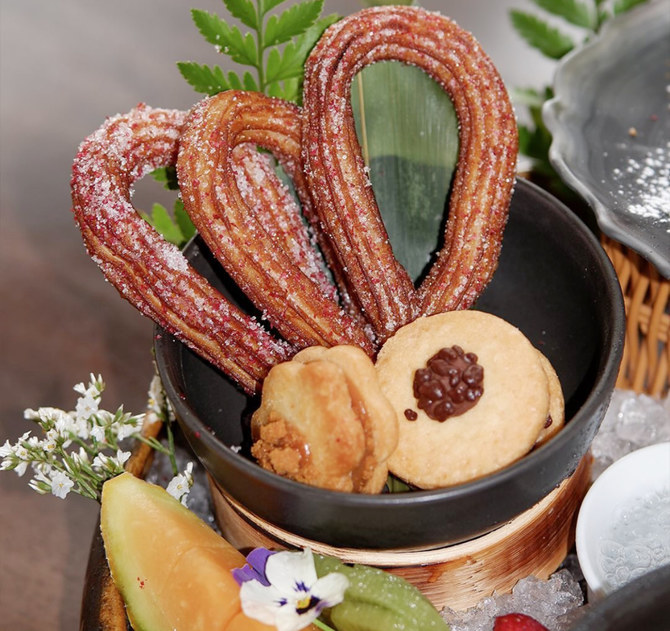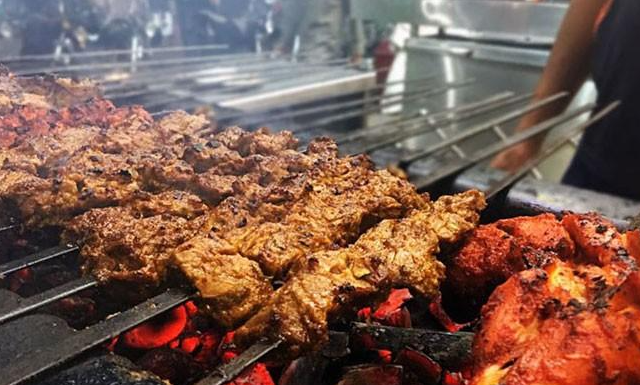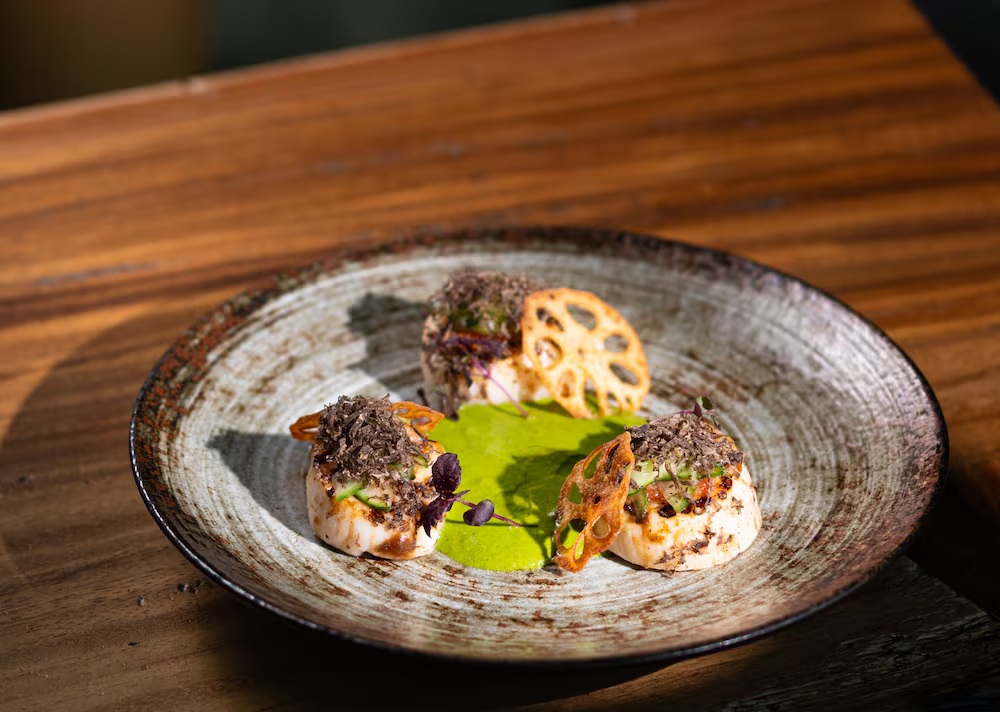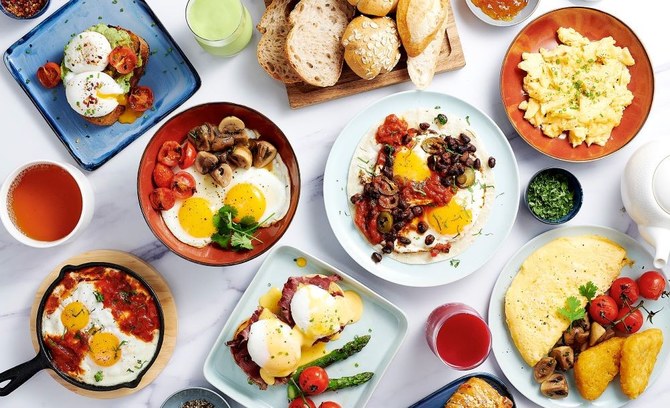
Felicity Cloake
At first glance, the Basque cheesecake has the look of a terrible mistake. The first time I made it, in the somewhat unlikely setting of a south London shelter for those experiencing homelessness over Christmas, diners were rightly suspicious of its singed (some might even say burnt) appearance. We’d had a large donation of cream cheese nearing its use-by date, and the chef in charge had recently visited San Sebastián, which explains why he thought this was the obvious solution, because back in 2017 I’d never heard of such a thing.
Now, however, this simple baked cheesecake, created in 1990 by Santiago Rivera of the Basque town’s La Viña restaurant, seems to be, if not everywhere, then ubiquitous enough for the Times to declare it the “pudding that broke the internet”, helped in part by the recipe in Nigella’s latest offering, Cook Eat Repeat. Indeed, food writer Ed Smith confesses that he was uncertain about including a version of this “food media darling” in his latest latest book Crave, yet, as he reasons, even after it stops being “A Thing”, the Basque cheesecake will still be “deliciously satisfying in its cream-cheesy, bronze-top-yet-wibbling-middle way”. Plus, as Ravneet Gill observes, it’s “so low fuss, it’s unbelievable”. What’s not to love, especially if you’re still looking for a high-impact sweet centrepiece for the Christmas table?
The dairy
Actually, as Nicola Lamb notes in her Kitchen Projects instalment on Basque cheesecake, this is a dessert in which the texture is as important as the flavour, which means that you can play around with the ingredients to suit your taste – or up to a point, anyway. The backbone is, of course, cream cheese; for all the snobbiness around it in certain quarters, Rivera himself sometimes uses Philadelphia, according to Gabriella Ranelli, who runs food tours that often take in La Viña, and, of course, it works just fine. The major Spanish brand, San Millan, contains slightly more salt than the Kraft version, which means if you use the latter, you might like to add a pinch to your recipe, but the fat content is very similar. (My own preference, Paysan Breton, which, unlike Philadelphia, doesn’t contain any stabiliser, is quite salty already, so it’s worth checking.)
Rivera’s recipe, as translated by Daniela Galarza from a YouTube video and confirmed by Ranelli (who tells the journalist there’s no big secret – the chef gives out printed copies all the time) also uses double cream, as does chef Adam Rawson, who developed the recipe used at the Standard in London. Gill goes for double and soured cream in her new book Sugar I Love You, which Lamb says “adds essential tang”, while Lawson uses cream cheese and soured cream. Frank Camorra of Melbourne’s Movida, meanwhile, puts cheese, cream, goat’s curd and yoghurt in his cheesecake and Tomos Parry, of Brat, the east London restaurant that perhaps did more than any other to put this dessert on the map over here, uses cheese, cream and goat’s curd.
While the yoghurt and curd give Camorra’s cake a lactic lightness, and those made with double cream and cheese alone are deliciously rich, the acidity of the soured cream lifts the whole dish for me. That said, I love the denseness of Rivera and Rawson’s versions, so I’m going to use creme fraiche in place of the soured and double cream.
The eggs
Some recipes, such as Parry’s and Sunny Lee’s for Serious Eats, use yolks as well as whole eggs, which adds richness without the textural toughness or “eggy” flavour that comes from over-egging the pudding, but my testers and I don’t find this a problem. Egg whites are always a pain to use up, unless you’re a body builder or a meringue fanatic, so I’ve stuck with whole eggs in my version.
The sugar and flavourings
You can include as much or as little sugar as you like; Camorra’s cake is almost savoury, with just 115g sugar to over 1kg of dairy, while Galarza’s contains nearly four times as much. As with the salt, it all comes down to personal taste.
Lee adds vanilla extract, Parry orange zest, Camorra lemon zest and juice and a slug of brandy, and Smith a couple of tablespoons of honey. Again, up to you; Rivera himself tells Galarza, “If you want salt, add salt; if you want vanilla, add vanilla …”, and I must say that the freshness of the citrus zests is particularly nice against the richness of the dairy. Then again, given the strong flavour of the caramelised top, any extra ingredients might well be gilding the lily.
The starch
Strictly speaking, you don’t need to add any flour – Galarza’s recipe leaves it out, and Dave Beran of now-shuttered Santa Monica restaurant Dialogue explains to the Los Angeles Times that he doesn’t use it, either, “because the centre never gets hot enough for the starch to cook through and it ends up grainy”. If you’re making the cake more than a few hours ahead of eating, however, it’s a wise insurance policy – as Lamb points out, “a Basque baked without flour is quite weepy the following day, and having some flour in the mix helps hold the liquid much better”.
The mixing
Some recipes just call for you to mix everything together and bake. The problem with this approach is that, while you want to make sure the ingredients are well combined, introducing too much air into the batter will give the cheesecake a light, fluffy texture, as opposed to the rich silkiness we’re aiming for here. It’s better to combine them gradually, and at a low speed: some recipes even call for a food processor, as opposed to a mixer, because, according to Beran, the latter can “overmix, then break” the batter. Rawson’s recipe suggests keeping the mixer on a very low speed, and adding the ingredients very gradually, while Lamb goes so far as to whisk the flour into a small amount of the mixture before adding it to the rest, which seems a wise precaution against pockets of powder – slow and steady is the name of the game with this cake.
The cooking temperature
I have to be completely honest now: even when Basque cheesecake isn’t perfect, it’s still great. Every single recipe I tried for this column was utterly delicious, but the single thing that makes the biggest difference to the texture of the dish, whether you want it smooth and dense and firm, like Gill’s, or ever-so-slightly oozy, like Rawson’s (which, once cut, resembles a ripe camembert) is its time in the oven – and we’re going for Gill’s “high and fast”. For this reason, use a deep tin, and make sure the batter comes up to about 1cm below the top; if your tin is too wide and shallow, as I find when I have to substitute a cake tin for Parry’s 25cm cast-iron frying pan, you’ll lose the textural contrast between the two.
Lee chills the batter before baking, in an effort to achieve the perfect balance between the deeply browned top and creamy centre, but then bakes it for such a long time at a very high heat (25 minutes at 230C, followed by 20 at 260C, which is almost self-cleaning mode in my oven) that I have to whip it out 15 minutes ahead of time when the smell of burning sugar breaks my resolve. Fortunately, the inside is pretty perfect, but I’m not sure the chilling can be credited for this.
Conversely, those that are baked at more moderate temperatures, such as Parry’s 180C fan (though at Brat they cook them in a wood oven), risk overcooking in the middle before the top browns – or overcooking for my tastes, anyway. If you like your cheesecake firm enough to slice, and only lightly browned on top, this may well be your ideal. For me, however, an oven hot enough to yield a deliciously bittersweet, almost burnt crust, and a wobbly, slightly molten middle is the way to go. If your oven isn’t hot enough, you can always do as Camorra recommends, and grill or blowtorch the top (though I’m not sold on Lee’s idea of adding sugar to create a brulee effect – at such a high heat, it turns unpalatably black).
If you don’t have an oven thermometer, now is a good time to invest in one. A probe thermometer is also useful, but not essential – as Beran observes, it’s preferable to err on the side of under- rather than overbaking here; a sloppy, creamy slice is much more pleasurable to eat than fluffy, overcooked curds. But, as I said, this is the cheesecake it’s impossible to mess up.
To serve
Lawson serves hers with a liquorice sauce, in homage to Nieves Barragán Mohacho’s version, Rawson a quince jam, Parry roast fruit; Lamb, meanwhile, makes a chocolatey version, and at least two Michelin-starred restaurants flavour their Basque cheesecake with blue cheese. This is a very adaptable dessert, but I like it just as it is.
Perfect Basque cheesecake
Prep 15 min
Cook 45 min
Makes 1 x 20cm cake
700g cream cheese, at room temperature
350g creme fraiche, at room temperature
300g caster sugar
½ tsp salt (optional)
5 eggs, beaten
2 tbsp cornflour, or plain flour
Heat the oven to 230C (210C fan)/450F/gas 8 (NB I use a conventional oven).

Grease and line a deep, 20cm cake tin with baking paper, so it comes up at least 2cm above the top of the rim, lay in a second sheet of paper at right angles, and weigh down the paper with a bowl, if need be.

Put the cheese in a large bowl, food processor or food mixer, and beat or whizz on a low speed until soft and spreadable.

Beat in the creme fraiche until evenly mixed in …

… then add the sugar and salt, if using, and beat until dissolved.

Finally, beat in the eggs one by one, scraping down the walls of the bowl as you go, until they’re thoroughly mixed in.

Put the cornflour in a small bowl, whisk to break up any lumps, then beat in a spoonful of the batter until thoroughly mixed in. Pour the cornflour mix into the big bowl of batter and stir to combine.

Pour the cake mix into the lined tin (if need be, remove the bowl weighing down the paper first), smooth the top, then pick up the tin and drop it a couple of times on a work surface to knock out any air bubbles.

Bake for 30 minutes, then keep your eye on it – mine took about 45 minutes in all, but it’s ready when the top is deeply brown and, more importantly, the middle is still wobbly and liquid; you’ll think it will never set, but it will as it cools. The internal temperature should be at least 60C.
Remove from the oven and leave to cool, before using the paper to help lift the cake out of its tin – I think it’s nicest served still slightly warm on the day it’s baked, but if you’d like to cut it into neat slices, you may prefer to refrigerate it for several hours first.

The Basque cheesecake – are you a fan, have you tried the original … or have you never even heard of this allegedly internet-breaking dessert?
Courtesy: theguardian
The post How to make the perfect Basque cheesecake – recipe appeared first on The Frontier Post.








